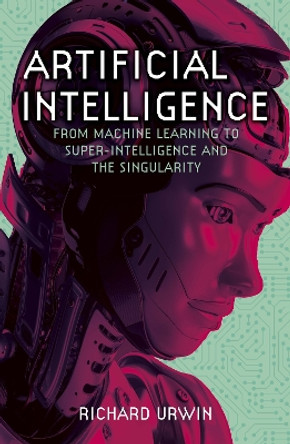Description
The first edition of this popular textbook, Contemporary Artificial Intelligence, provided an accessible and student friendly introduction to AI. This fully revised and expanded update, Artificial Intelligence: With an Introduction to Machine Learning, Second Edition, retains the same accessibility and problem-solving approach, while providing new material and methods.
The book is divided into five sections that focus on the most useful techniques that have emerged from AI. The first section of the book covers logic-based methods, while the second section focuses on probability-based methods. Emergent intelligence is featured in the third section and explores evolutionary computation and methods based on swarm intelligence. The newest section comes next and provides a detailed overview of neural networks and deep learning. The final section of the book focuses on natural language understanding.
Suitable for undergraduate and beginning graduate students, this class-tested textbook provides students and other readers with key AI methods and algorithms for solving challenging problems involving systems that behave intelligently in specialized domains such as medical and software diagnostics, financial decision making, speech and text recognition, genetic analysis, and more.
About the Author
Richard E. Neapolitan is professor emeritus of computer science at Northeastern Illinois University and a former professor of bioinformatics at Northwestern University. He is currently president of Bayesian Network Solutions. His research interests include probability and statistics, decision support systems, cognitive science, and applications of probabilistic modeling to fields such as medicine, biology, and finance. Dr. Neapolitan is a prolific author and has published in the most prestigious journals in the broad area of reasoning under uncertainty. He has previously written five books, including the seminal 1989 Bayesian network text Probabilistic Reasoning in Expert Systems; Learning Bayesian Networks (2004); Foundations of Algorithms (1996, 1998, 2003, 2010, 2015), which has been translated into three languages; Probabilistic Methods for Financial and Marketing Informatics (2007); and Probabilistic Methods for Bioinformatics (2009). His approach to textbook writing is distinct in that he introduces a concept or methodology with simple examples, and then provides the theoretical underpinning. As a result, his books have the reputation for making difficult material easy to understand without sacrificing scientific rigor.
Xia Jiang is an associate professor in the Department of Biomedical Informatics at the University of Pittsburgh School of Medicine. She has over 16 years of teaching and research experience using artificial intelligence, machine learning, Bayesian networks, and causal learning to model and solve problems in biology, medicine, and translational science. Dr. Jiang pioneered the application of Bayesian networks and information theory to the task of learning causal interactions such as genetic epistasis from data, and she has conducted innovative research in the areas of cancer informatics, probabilistic medical decision support, and biosurveillance. She is the coauthor of the book Probabilistic Methods for Financial and Marketing Informatics (2007).
Reviews
At many universities courses on arti cial intelligence (AI) are offered, mainly for computer science students. This is very often a bit optimistic since this field also requires a sound mathematical background. Furthermore, there is now an increasing rumor about the problems, dangers etc. that may appear. In this field this textbook is an excellent contribution to avoid these discussions and make artificial intelligence more and more a practicable field!
-Christian Postho, St. Augustine
Book Information
ISBN 9781138502383
Author Richard E. Neapolitan
Format Hardback
Page Count 466
Imprint CRC Press
Publisher Taylor & Francis Ltd
Weight(grams) 1029g








